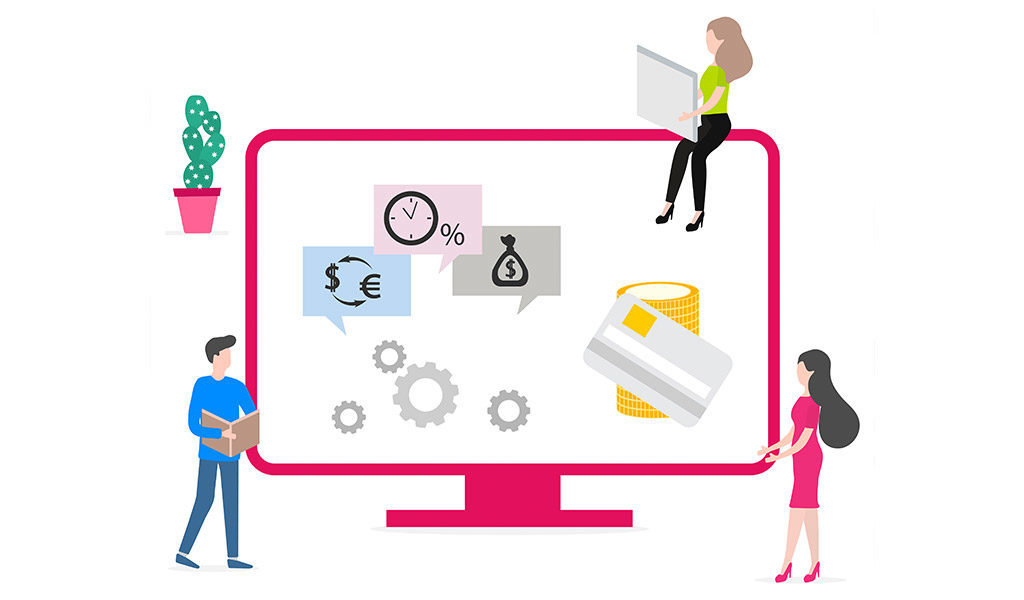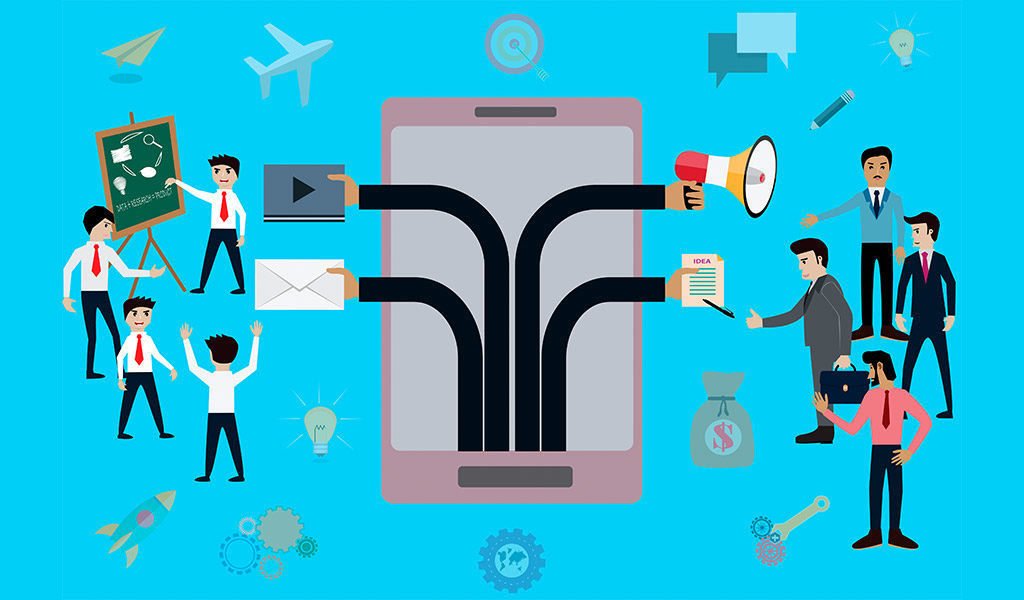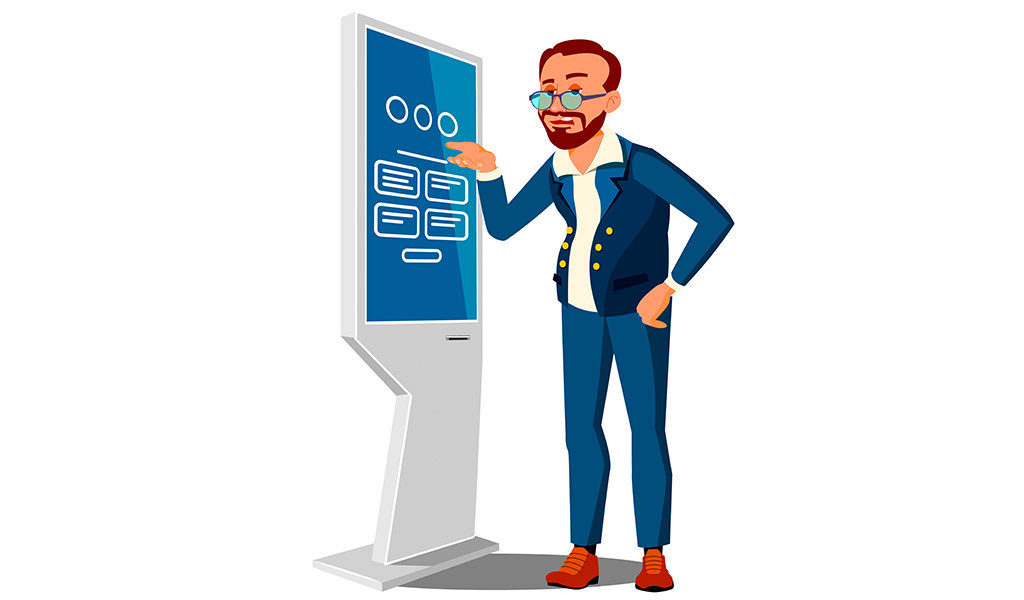
Why Investing In Self Service Customer Support Channels Will Revolutionize How You Do Business
At least two-thirds of customers are “serial switchers” — that is, they demonstrate extraordinarily low levels of brand loyalty by switching fluidly between brands when making purchases. The most common catalyst for desertion is not price, accessibility, or even a lack of options. Instead, unsatisfactory customer service experiences drive potential customers away in greater numbers than any other inconvenience or roadblock in the purchasing process. What’s more, the number of customers who switch brands due to insufficient customer service is increasing rapidly, with the number of serial switchers rising 37% in the span of two years between 2016 and 2018.
Today, two out of five customers who switch brands do so because a customer service experience made them feel that the business disrespected or undervalued their time. 30% switch brands if they are unable to quickly speak with a person who is knowledgeable of and has the ability to solve the problem.
Why Implement Customer Self-Service Strategy?
Developing robust customer self-service channels dramatically reduces the number of service-related departures, as 53% of consumers actively abandon purchases (and then patronize other brands) before even allowing customer support agents (CSAs) a chance to provide satisfying customer service. When these potential buyers cannot find answers to their questions or concerns themselves, the lack of readily available information becomes a kind of poor customer service on par with either having an inquiry transferred to multiple unknowledgeable/unhelpful CSAs or being left on hold too long (which together cause companies to lose almost the same number of customers). Businesses seeking to stem the flow of potential customers moving away from their brand (and towards their competitors) must invest in customer self-service options to comply with buyers’ growing demand for self-directed customer support. What’s more, implementing good customer self-service strategy not only increases customer satisfaction (and, consequently, retention), it improves site traffic, reduces bounce, decreases customer support ticket volume, and lowers companies’ overall marketing and customer service spend.
Customer Self-Service Strategy & Strategic Implementation
What Is Customer Self-Service?
Customer self-service, also called “customer self-support” and “self-service customer service,” is simply any action a buyer (or potential buyer) takes to solve their problems or answer their questions without the assistance of a CSA or other brand employee. Self-serve customer service channels include static website pages, AI/automated chatbots, and online customer communities. Across these different channels, site visitors expect to have access to archival and undated files and forum content created/contributed by brand representatives and industry experts as well as other customers. Included content can include knowledge bases, troubleshooting guides and user manuals, product/service updates and announcements, and curated FAQ pages and question/answer forums.
At least 70% of consumers expect companies to maintain/regulate at least one such self-serve customer service channel on their website. Moreover, use of (and reliance on) such self-service customer support channels is continually growing, with 77% of consumers reporting having used at least one self-service customer support channel at least once during 2018 (in comparison to 67% in 2012).

What Are The Most Common Customer Self-Service Channels?
Static Website Pages – Most companies rely on static web page content as their primary self-service customer support channel. That said, over half of consumers say the reason they cannot solve their problems or answer their questions is a lack of available information online. Firms that rely solely on outdated or limited static webpage content (including overly limited FAQ pages) stand to lose a significant number of customers due to unsatisfying customer service experiences, as more than 80% of adult consumers seek out and aim to use site search functions and FAQ pages as their first attempts to self-serve.
Knowledge Bases – Centralized web-based databases for collecting, storing, and organizing information so it can be searched and retrieved are the most significant and currently most-effective self-service customer support channels. Knowledge bases can be human-readable or machine-readable. Human-readable knowledge bases store and provide consumers with access to files/documents they can use to self-direct troubleshooting and other problem-solving processes. Content can include user manuals, comprehensive FAQ pages, and peer-driven question/answer forum contributions. Machine-readable knowledge bases store data for use by machine-learning and automated systems; these databases serve as the foundation for AI/automated chatbot self-service customer support channels.
AI/Automated Chatbots – The fastest-growing self-service customer support channel, the use of AI/automated chatbots, is expected to outgrow all other customer service channels by 2020. Specifically, by that time, at least 85% of customer service interactions will likely take place via automated systems. This will not completely eliminate the need for human-based customer support (and human-driven knowledge base content generation) as automated customer self-service channels rely on human-created service data to create and maintain their databases. What’s more, it is critical to customer satisfaction that automated customer self-service channels always maintain an “escape hatch” so customers can redirect their service inquiry to a human CSA should the automated customer service experience prove unhelpful, frustrating, or otherwise difficult for them to use. This is essential because, currently, only 27% of consumers are happy using automated chatbot service channels without clear escape hatches.
Online Customer Communities – This self-service customer support channel represents the most significant potential for improving businesses’ ongoing customer service outcomes. Online customer communities create a space for peer-to-peer troubleshooting, problem-solving, and other product/service-related conversations. CSAs and brand-affiliated marketers cannot hope to match the volume or specificity of content created in robust online customer communities, nor can they hope to establish the same degree of credibility to prospective buyers as user-generated content.
Additionally, with the rapid growth of participation in online customer communities (which jumped from 31% in 2012 to 56% in 2015), firms can leverage user-generated data to create static and AI/automated self-service customer support content. Community generated content can also drive product upgrades, updates, and innovation in response to explicit customer concerns, questions, and needs. Moreover, 86% of firms currently maintaining online customer communities use them to increase peer-based brand advocacy, and more than half use them to upsell and cross-sell products/services.
7 Reasons Customer Self-Service Is Essential To Business Success
Customer self-service is a key driver of firms’ goal achievement and competitive success. This is because the combined benefits of implementing high-quality self-service customer support channels improve brand reputation, increase customer loyalty, and drive revenue growth (the result of increased profits and decreased marketing/customer support spending). Those benefits include:
1. Customers Prefer Self-Service
40% of customers acknowledge preferring to use self-service customer support. This is because self-service customer support is often more convenient, faster, and more flexible with respect to customers’ unique time, energy, and resource availability.
Consequently, customer self-service channels tend to require much lower customer effort inputs than other customer service channels. Customers’ demonstrated behavior tends to almost-always favor the lowest-effort service option. Additionally, over half of customers believe that being able to answer their own questions about a product, service, or purchasing decision (rather than relying on a CSA) is an essential indicator of a brand’s credibility.
2. Customers Are More Likely To Use Self-Service Customer Support Channels Than Submit A Formal Customer Service Inquiry
More than 90% of consumers expect search-engine-like functionality from the web pages they visit. A similar percentage would gladly use a keyword-optimized, easily searchable knowledge base (instead of engaging a CSA) so long as one was available and met their expectations for search-engine-like operation. Two-thirds of customer service inquiries categorically able to be solved using the information accessible via knowledge bases or online customer community forums. It is therefore not surprising that fully 81% of consumers will try using self-service customer support channels, just 27% actively seek a live human interaction to solve their problems.
3. Robust Self-Service Customer Support Channels Cause Near-Immediate Increases In Website Traffic, Conversion, Retention, & Referrals
Firms operating high-quality self-service customer support channels experience see dramatic improvements in multiple key performance indicators. For example, 54% of firms report significant web traffic increases after implementing self-service customer support channels for the first time. This is likely the result of increased overall customer satisfaction with customer service experiences, as service-satisfied customers are 3.5x more likely to repurchase and 5x more likely to give referrals than a dissatisfied customer. What’s more, nearly half of firms report increases in sales and corresponding decreases in phone-based customer service inquiries, and 37% also see reductions in email-based inquiries.
4. Customers Need A Choice Of Service Channels
Omni-channel and multi-channel customer service platforms increase the number and accessibility of service channels, including both the points of entry and the possibilities for easy “lane-changing” between channels. As a result, customers are more in control of their service journey and can seek out and get what they need from the firm, faster. This creates a service space characterized by positive, persistent interactions, increasing satisfaction and loyalty. Customer self-service is an essential inclusion in effective omni- and multi-channel customer service platforms; they reduce CSAs ticket load, inform procedurally generated knowledge bases, and effectively reduce average customer service wait/hold times.

5. Self-Service Customer Support Costs Less Than Engaging A Live CSA While Reducing Associated Customer Service Costs
The cost of individual self-service customer support events is less than $0.25 per customer-driven resolution, while each B2C customer service costs more than $7 per interaction and B2B live customer service costs an excess of $13 per interaction. As a result, established firms that add self-service customer support options to existing customer service departments can expect an average annual reduction in customer support spending of $1 million to $3 million. Additionally, firms implementing robust knowledge base customer self-service channels can expect to see significant savings in CSA training costs and customer service department staffing costs.
6. Self-Service Customer Support Diminishes The Number Of Customer Service Tickets Submitted
Part of the anticipated reduction in customer service department staffing costs is due to diminished customer support ticket volume. Approximately two-thirds of customer service tickets could be effectively solved using self-service customer support channels if they were available. The remaining third of customer service inquiries involve higher-order and increasingly complex issues, such as payment disputes or complaints, which are best (most satisfactorily) resolved by live CSAs. Customer self-service channels, then (when well-implemented) decrease the number of low-level service inquiries submitted to CSAs, reducing individual service ticket load (especially in periods of normally heavy traffic) and increasing CSA availability.
7. Self-Service Customer Support Contributes To More Efficient Use Of Human Resources
As the number of low-level customer service ticket submissions decreases, CSA availability for higher-order issues increases. Consequently, CSAs can dedicate their time to otherwise unsolvable issues, repairing relationships with customers, and contributing to employee-driven knowledge base content and conversations. These kinds of inter-departmental conversations empower CSAs to develop greater knowledge of complex service topics and nuanced product/service characteristics. Moreover, they are also proven to improve CSA satisfaction and performance. This is especially significant considering that 84% of the market value of any given business comes directly from intangible assets like CSAs and their knowledge of products/services.
How Can CommBox Change The Way You Provide Self Service Customer Service?
CommBox presents companies with a unique opportunity to implement robust customer self-service channels as a part of an industry-leading omni-channel customer service platform. Further, CommBox facilitates the creation of robust knowledge base self-service customer support channels, FAQ and other static web page self-service customer support channels, and AI/automated chatbot channels. CommBox empowers CSAs to contribute to customer self-service channels. Moreover, the CommBox platform creates intentional spaces for the inter-departmental conversations and enhanced CSA training/ongoing education that so dramatically increase a firm’s market value. Contact us today to find out more about what CommBox can do for your business!